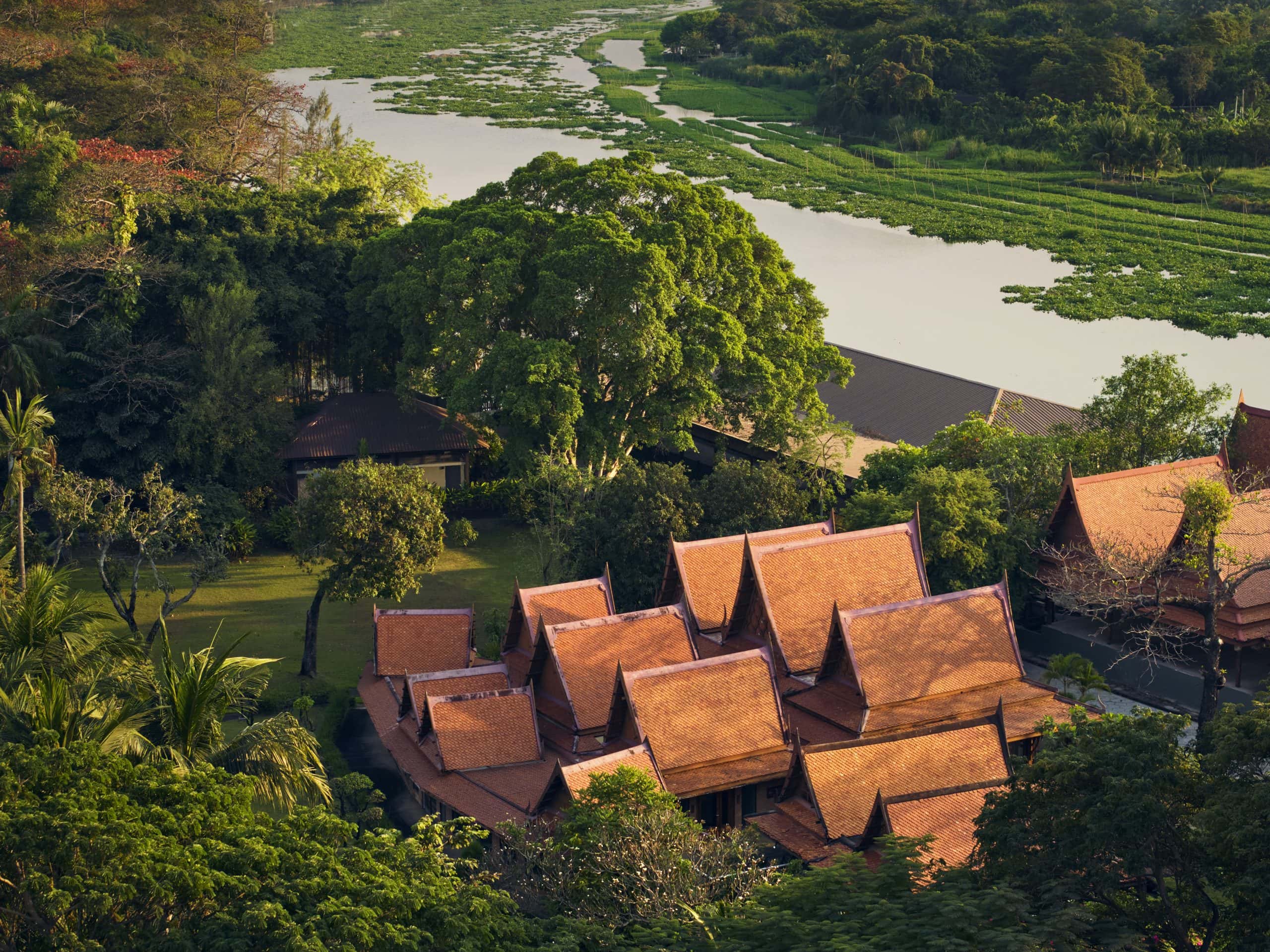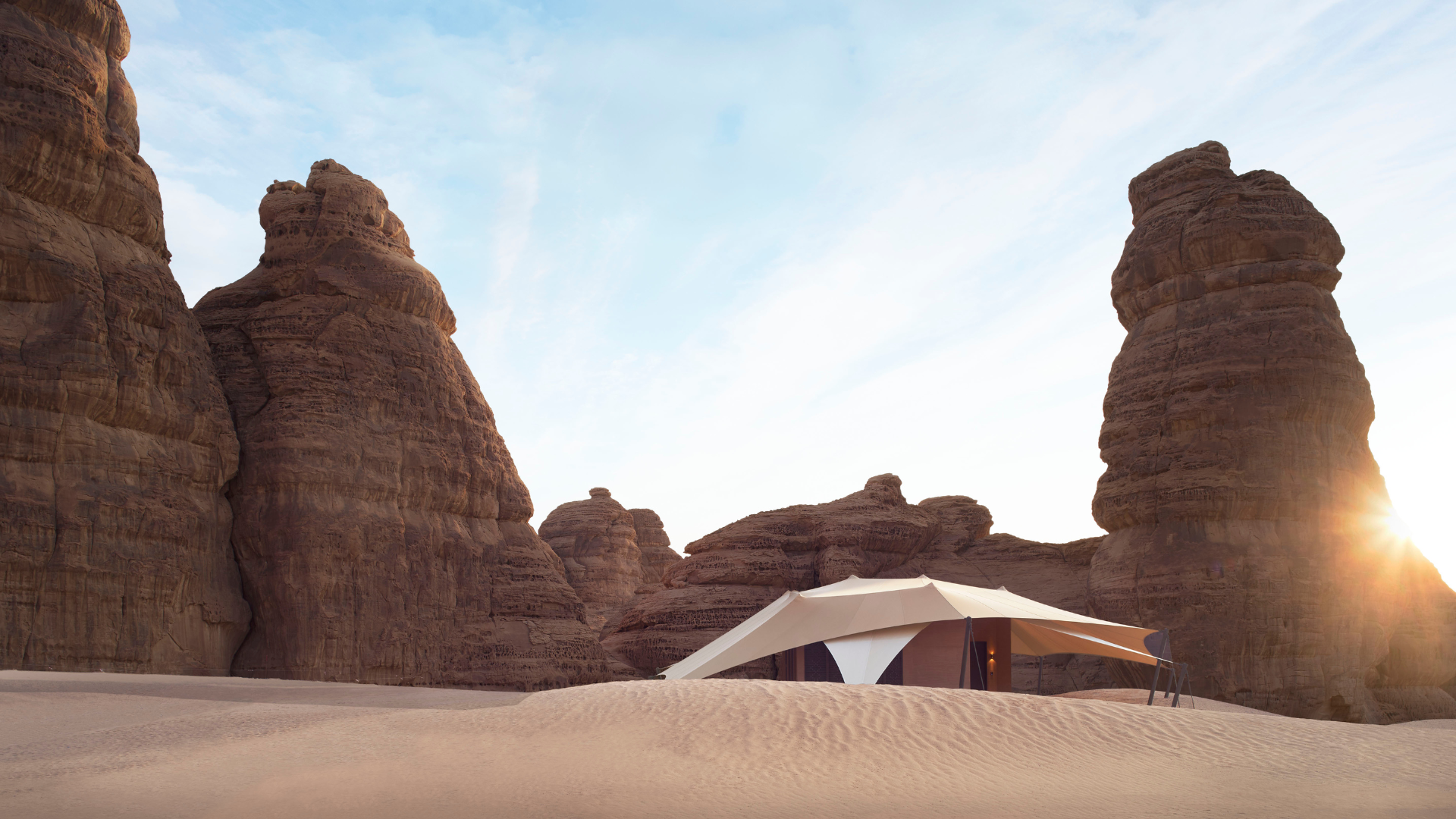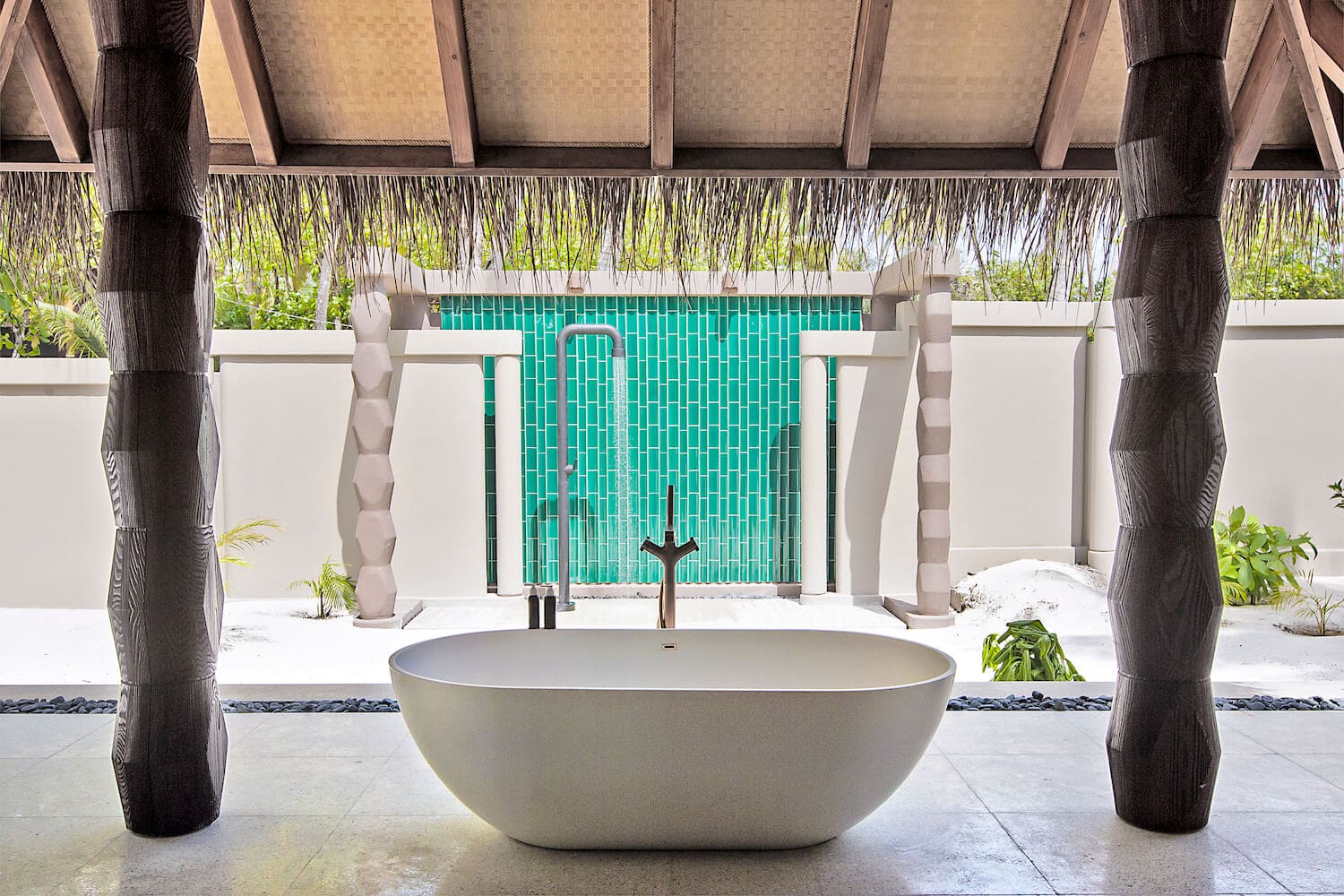Wellness retreats are often situated in remote locations, peacefully away from the hustle and bustle of the average city-dweller. But with a surge in short breaks and city weekenders, wellness is taking root in the unlikeliest of places—like the centre of Beijing, China’s hectic and sprawling capital. A quirky hotel in the bustling heart of Sanlitun, The Opposite House is a boutique design hotel with a lot more heart than its stylish exterior might suggest. Paying special attention to the needs of wellness travellers, the hotel helps those focused on maintaining their wellbeing while they travel do just that. Compare Retreats’ Editor & Chief Content Officer Rebecca Cairns checked into The Opposite House on a long weekend in Beijing to find balance on her city break.

Location
In the popular shopping and bars district of Sanlitun, The Opposite House is part of the Swire Properties Taikoo Li complex. Comprised of shopping malls, plazas and restaurants, Taikoo Li is a hub of activity at all hours, just like the rest of Sanlitun. Around 30-minutes drive from Beijing International Airport, The Opposite House is well-situated for a quick weekend break.

Resort
Opened in 2009, The Opposite House was Swire Properties first venture into hospitality. Designed by Kengo Kuma, one of Japan‘s most renowned architects, the minimalist and modern aesthetics of the building sit at odds with the traditional and ancient veneer of Beijing; however, the flow and seamlessness of the space gives the hotel a restorative energy that feels like home from the moment you walk in the door.
What The Opposite House lacks in size, it compensates for with a broad selection of facilities. The large underground swimming pool and gym offer a comprehensive wellness experience, and while there’s no spa on-site, the hotel offers in-room massages which more than make up for the fact.
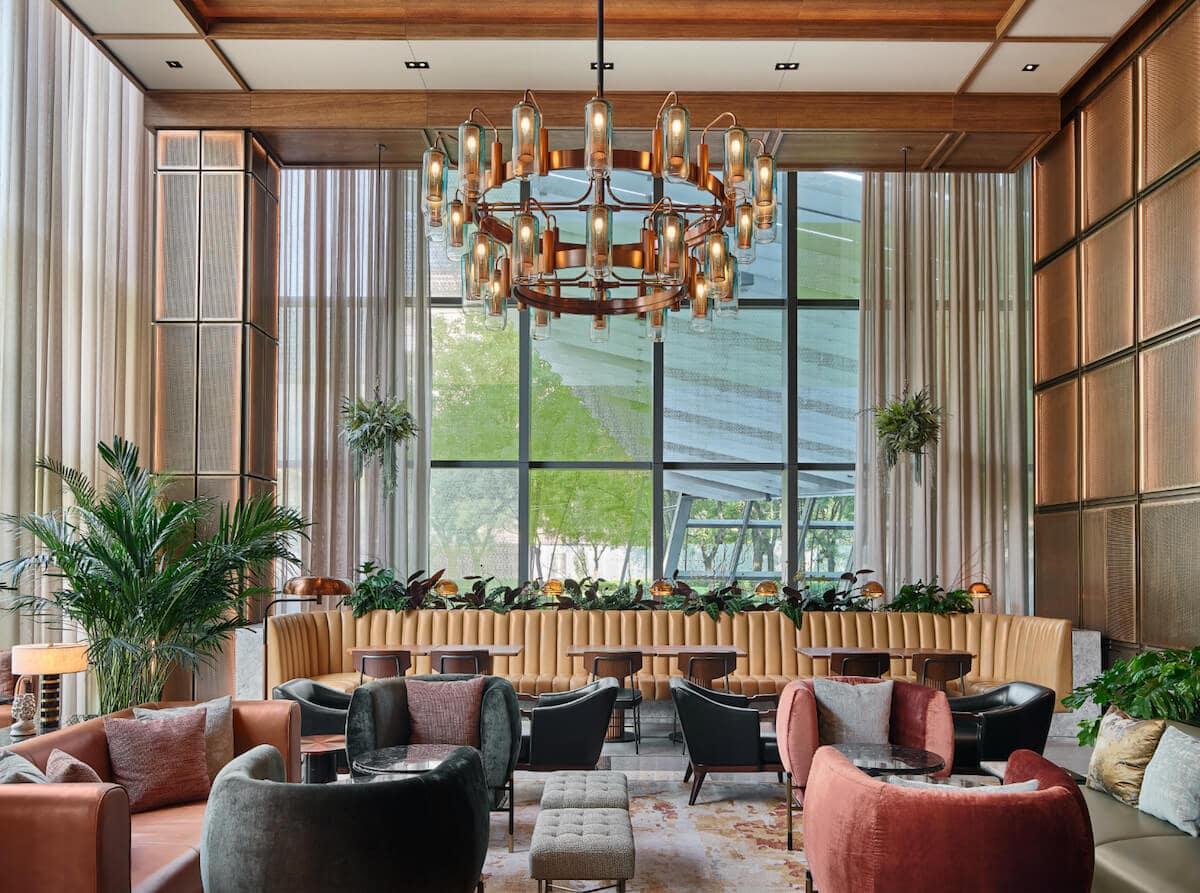
For dining options, there’s Jing Yaa Tang Chinese restaurant and the just-opened Union Bar. Opening later this year is Superfly, a cool bar and nightlife concept for the art-loving crowd, while the neighbourhood-style cafe The Village undergoes renovations. Guests can also opt for in-room dining.
The statement piece of this hotel is its art-filled lobby. In collaboration with 798 Art Zone—a must-see for anyone interested in art and design, and a 20-minute cab ride away—The Opposite House invites artists to display their creative works and sculptures in its lobby in a seasonal rota. The wood-clad hallways and lift vestibules are similarly decked out with unique sculptures evoking the textiles and history of China’s capital, adding a dash of intrigue and personality to this minimalist hotel.

Accommodation
With 99 rooms across five floors, The Opposite Househas an intimate feeling at odds with its location. The spacious rooms and suites offer a light and bright open-plan layout that flows from space-to-space with delicate glass dividers and gauze curtains. Minimalism is the name of the game here, and the focus is on the wood: it permeates every aspect of the room’s design, from the bed frame to the bath-tub, creating a surprising warmth and homeliness in what is otherwise a hyper-stylised, chic abode. Despite the fact we were overlooking Sanlitun Road, we never had a problem with noise—every time we stepped out into the busy shopping district, it was always a surprise.
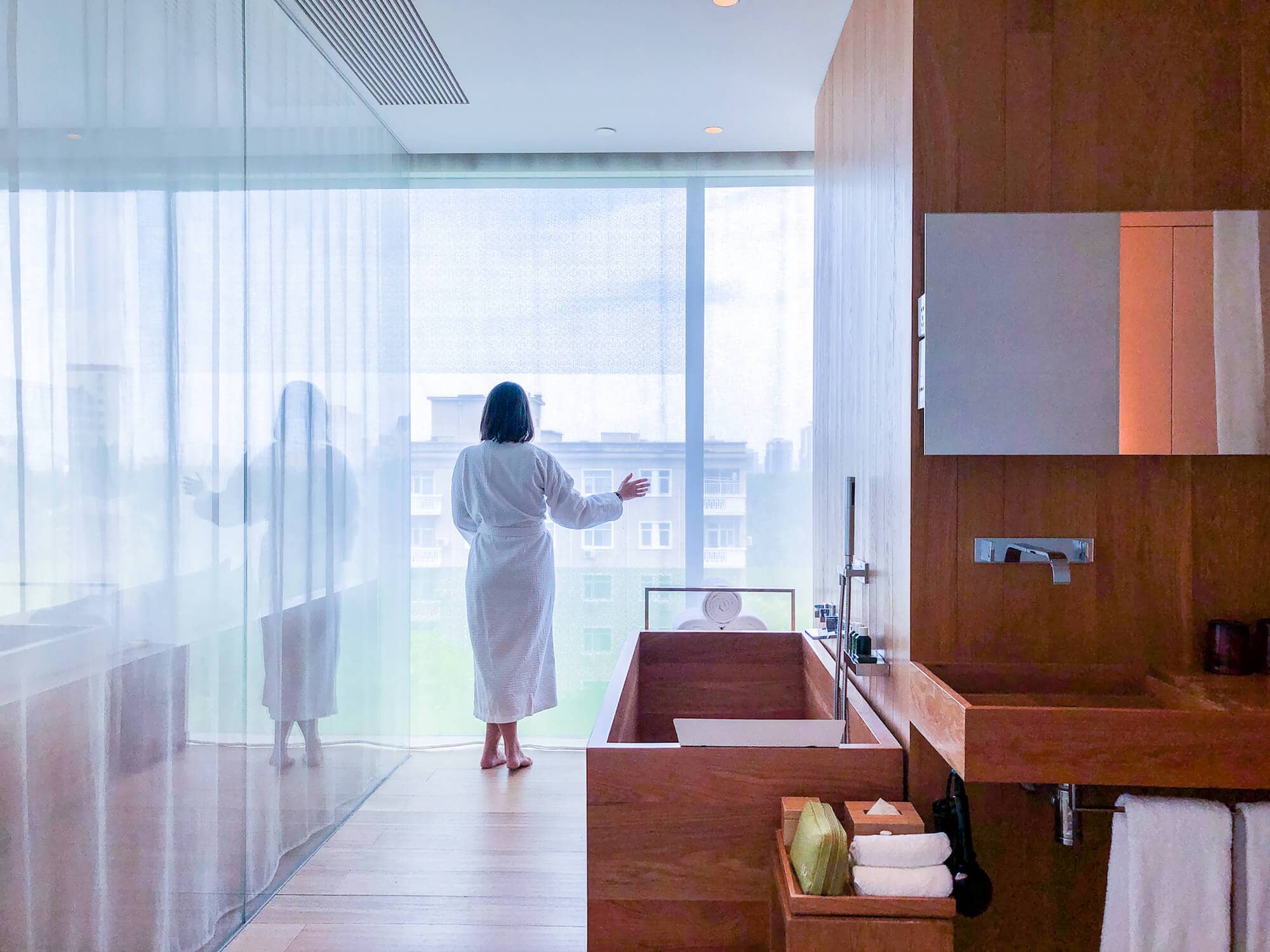
Large king-size or twin beds are standard, with smart side tables and controls in the headboard to manage the electronic blinds and room lights. The en-suite had a huge bathtub, double sink, and separate private shower and loo, with custom bathroom amenities.
In a supportive gesture towards wellness, each room comes equipped with a yoga mat and small free-weights for personal workouts. The Opposite House makes you realise that not all bathrobes were created equal, and if Beijing city wasn’t so fascinating, it would be very easy to hole up in your suite for a weekend and never leave.
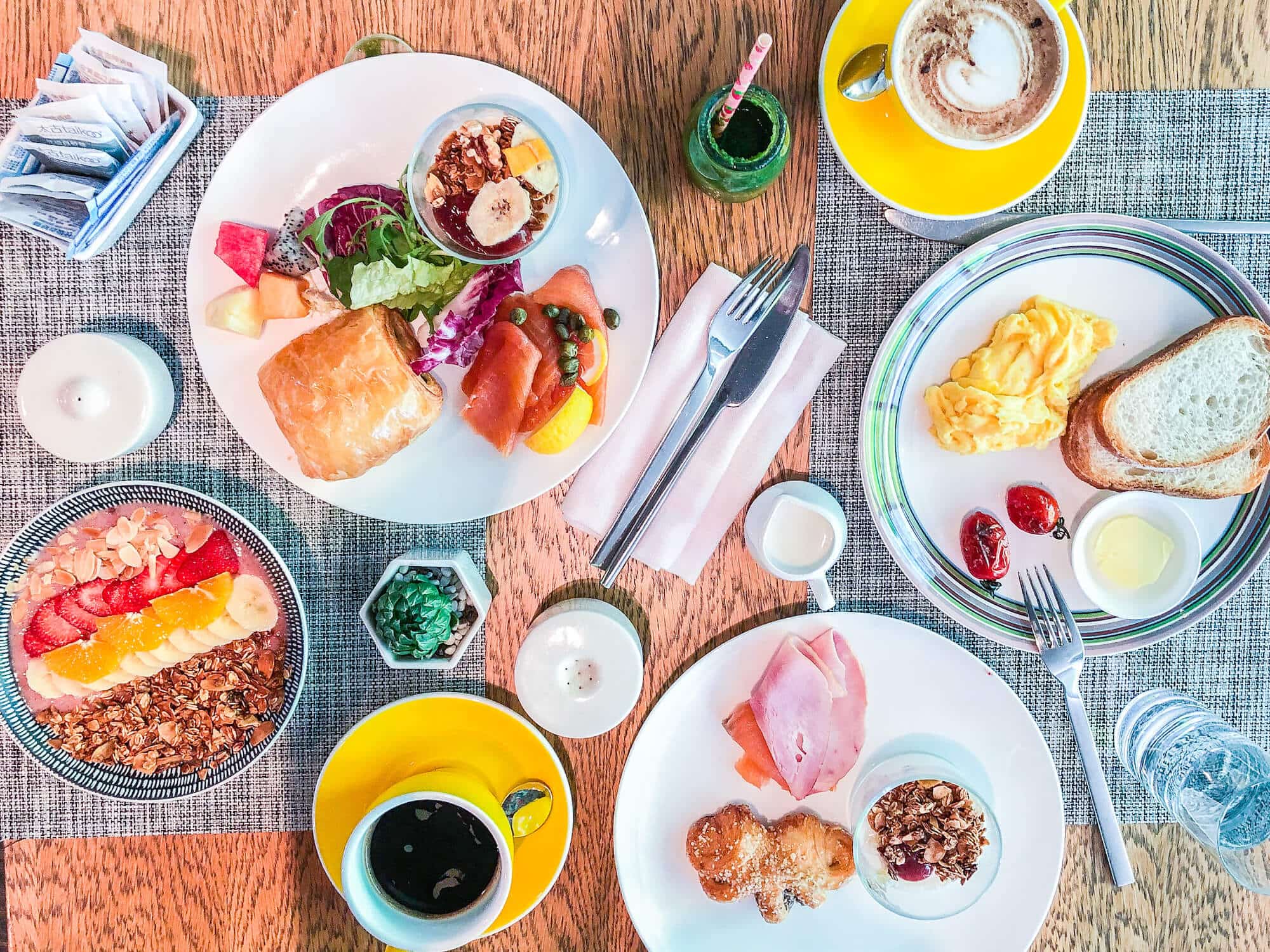
Nutrition
The Opposite House currently has two in-house dining venues while it revamps two others—Superfly which replaces Mesh Bar, opening later this year, and The Village Cafe which will be renovated over the coming months.
Jing Yaa Tang is the hotel’s signature restaurant, which focuses on Beijing delicacies and Chinese cuisine. While you’re in Beijing, it would be sinful to not at least sample the city’s most famous dish, Beijing roast duck, which here is sliced and served tableside with a selection of condiments and thin, floury pancakes. Another Beijing classic is the Beijing noodles, served with a variety of condiments and pickles on the side to flavour to your taste—it was a simple but flavourful dish, and much fresher and less greasy than other renditions I’ve had around the city.
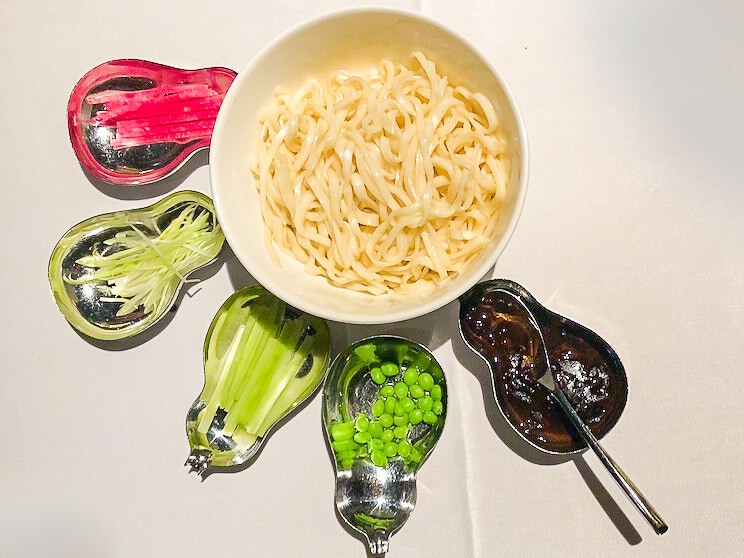
The regional dishes change seasonally: during our visit, we tried dishes from a special Mixun pop-up menu featuring Yunnan and Sichuan-inspired light and flavourful vegetarian dishes. Dining out in China as a vegetarian isn’t always the easiest endeavour, but Jing Yaa Tang provided plenty of delicious options, like bamboo mushrooms in green Sichuan pickles and wok-fried broccolini with Sichuan peppers. Portions here are generous but much smaller than many of the local restaurants, which is perfect for small groups wishing to sample more dishes and avoid overeating.
The newly-opened UNION sits in the hotel’s lobby, serving up delicious signature drinks, non-alcoholic beverages and tea. Inspired by the Silk Road, the colonial-style bar incorporates spices and tea into its bespoke cocktail menu, designed by Proof&Company, a Singaporean mixology group who have created the menus of some of Asia’s Best Bars.
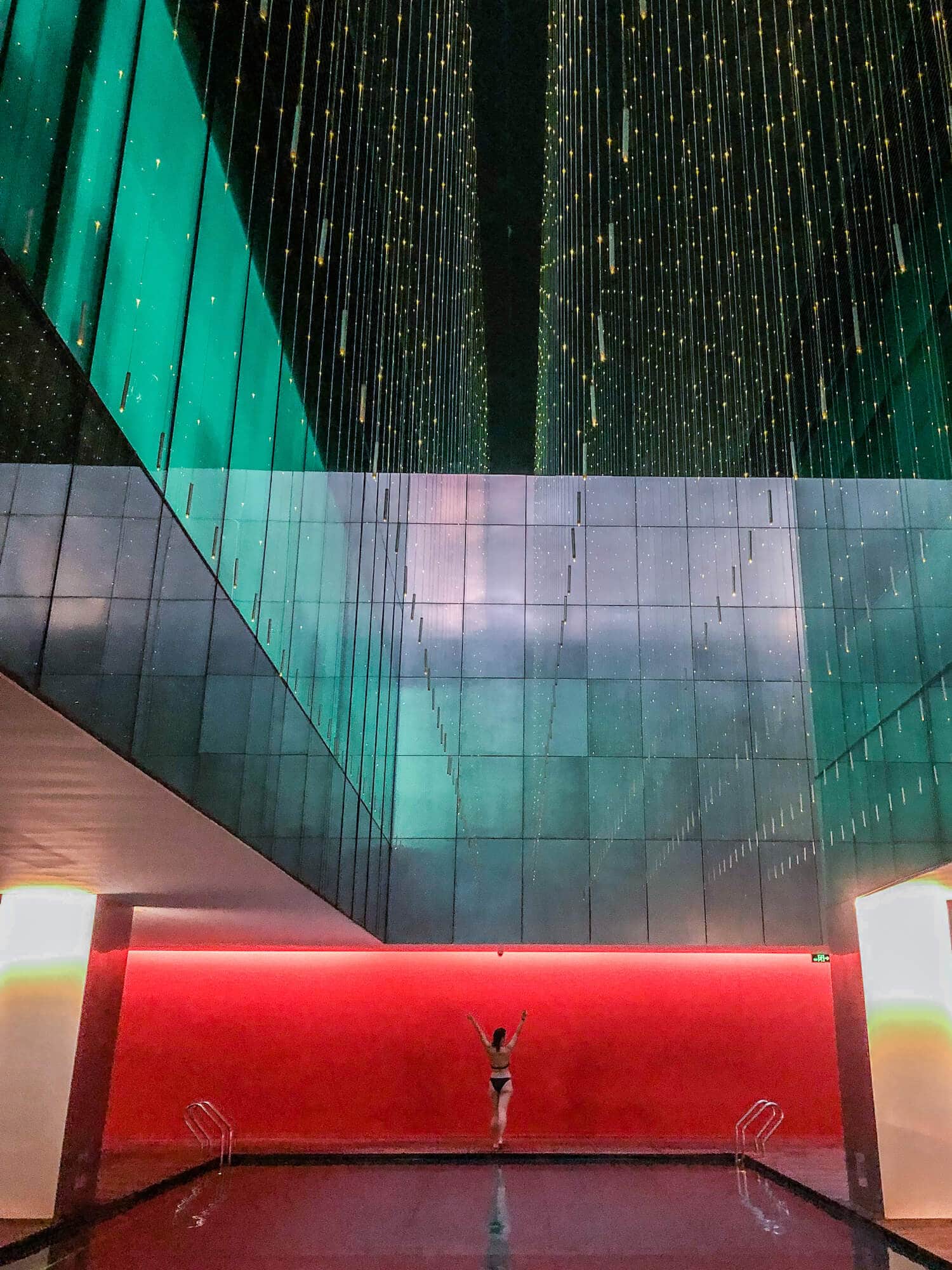
Wellness Offerings
Currently, The Opposite House doesn’t offer any dedicated retreat programmes—a stay here is a healthy staycation rather than a retreat programme—but for wellness travellers seeking a city break, this is the perfect base.
Within the hotel, the ‘starlit’ pool and gym offer plenty of fitness opportunities, while the in-room massage is perfect for relaxing at the end of a long day of exploring. While in Beijing, I wracked up a huge step-count just exploring the city each day, so the Chinese Massage we had one evening (a healthy alternative to hitting the bars!) was a glorious reset for my aching feet and tired muscles.

An extra perk of The Opposite House in terms of wellness offerings is its relationship with SpaceCycle, the boutique spin studio just a hop, skip and a jump away in the neighbouring building. Staff can book your classes here for 45-minutes of intensive sweating and spinning—while I’ve never been a big bike fan, the infectious enthusiasm of the instructor had me pedalling like I was in the Tour de France. The classes are offered in both Mandarin and English, and the staff were extremely welcoming, showing us the ropes (or, the bikes and shoes) as first-timers.
Don’t think of this as a wellness retreat so much as a healthy hotel to balance out all the indulgences of travel—you can keep your wellness habits up easily in this supportive environment, recharge from your sightseeing with a massage, and sample local cuisine consciously here.

We Loved…
I loved the fact that I could enjoy all that Beijing had to offer—aka, delicious food—and not worry about indulging in a Peking duck meal or a unique cocktail at a Speakeasy, because I could balance it out with fitness facilities and classes in the hotel. Beijing is an exhausting city, and knowing I was able to retreat at any time to a quiet, comfortable and private space was the mental break I needed between days spent exploring all the biggest attractions.

Insider Tip
Book yourself into a morning SpinCycle class and then cool down in the starlit pool afterwards — the combination of natural light and twinkling LEDs make it a serene space to float and stretch out tired muscles after a HIIT spin class or a day of exploring.

